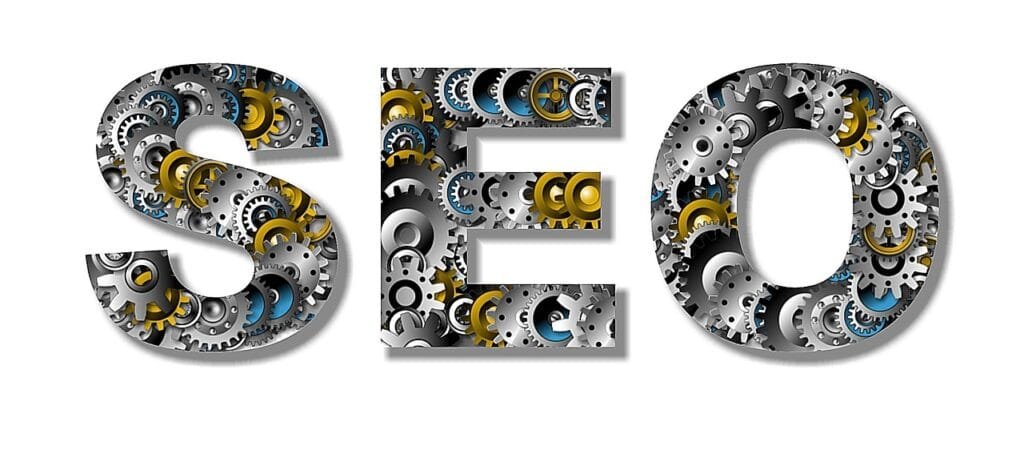Understanding Traditional Marketing
Overview of Traditional Marketing Techniques
Traditional marketing encompasses various strategies and tools employed to promote products and services prior to the digital revolution. This approach primarily utilizes media such as television, radio, print newspapers, and magazines to convey marketing messages. Through these mediums, businesses can reach a broader audience, particularly in local markets.
Common traditional marketing techniques include:
- Television Advertising: Expansive reach through commercials on popular networks, appealing to visual and auditory senses.
- Print Advertising: Utilize newspapers, magazines, and brochures to create targeted messages.
- Radio Advertising: Short ads aired during popular programs, aiming to capture the audience’s attention.
- Outdoor Advertising: Billboards, transit ads, and posters strategically placed in high-traffic areas.
The effectiveness of traditional methods lies in their capacity to build brand awareness and offer consistency in message delivery. Despite the rise of digital marketing, traditional techniques remain vital in certain contexts, particularly for capturing the attention of local audiences.
Evolution of Traditional Marketing
The landscape of traditional marketing has dramatically evolved over the years. Initially, marketing efforts focused on the print medium, where advertisements were primarily text-based. Over time, marketing strategies shifted with advancements in technology and media, embracing various formats to engage audiences.
The evolution can be summarized as follows:
| Era | Description |
|---|---|
| Print Era | The primary medium for advertising was newspapers and magazines, often featuring simple text and illustrations. |
| Radio Era | Introduction of radio ads allowed businesses to reach audiences audibly, paving the way for catchy jingles and innovative storytelling. |
| Television Era | Marketers began utilizing visuals and sound to enhance brand messages, representing a major leap in audience engagement. |
| Outdoor Era | Billboards and transit advertisements emerged, focusing on public visibility and repeated exposure to build brand recognition. |
Despite the advancements that digital marketing presents, the principles of traditional marketing, including brand awareness and audience reach, still hold significant value in today’s marketing strategies. For more information about various approaches, you may explore our articles on traditional marketing methods and traditional advertising strategies.
Key Differences with Digital Marketing
Navigating the differences between traditional marketing and digital marketing can help you determine the best strategies for your business. Here, we will compare traditional marketing methods with digital marketing methods, and evaluate their respective reach and engagement levels.
Traditional vs. Digital Marketing Methods
Traditional marketing encompasses a variety of methods such as brochures, posters, banners, postal mailings, promotional items, and advertisements. These methods have been effective for decades and continue to play a vital role in reaching specific audiences (T.E. Digital Marketing).
On the other hand, digital marketing utilizes online channels such as social media, email, search engines, and websites to deliver targeted messages. Digital marketing provides opportunities for two-way communication and allows for real-time feedback from consumers.
| Feature | Traditional Marketing | Digital Marketing |
|---|---|---|
| Communication Style | One-way | Two-way |
| Targeting | Standardized | Customized |
| Geographic Reach | Local | Global |
| Results Timing | Slower | Faster |
| Tracking | Minimal | Extensive |
Comparison of Reach and Engagement
The reach and engagement of traditional marketing tend to be more localized compared to digital marketing’s global reach. Traditional marketing, while effective for certain demographics, specifically older or regional audiences, does not allow for the level of customization that digital marketing can provide (Simplilearn).
With digital marketing, businesses can analyze data and metrics to understand their audience better. This data-driven approach helps businesses tailor campaigns to meet the specific preferences of their target audience. Tracking engagement and analyzing results in real-time transforms marketing strategies into a more agile approach, unlike the static nature of traditional marketing that does not allow for easy adjustment once campaigns are executed.
| Metric | Traditional Marketing | Digital Marketing |
|---|---|---|
| Audience Engagement | Limited | High |
| Feedback Responsiveness | Slow | Immediate |
| Data Analytics | None | Robust |
Understanding these differences will allow you to strategically align your marketing efforts based on your objectives and target audience. For more insights into effective strategies, explore our article on traditional marketing methods.
Effectiveness and Cost-Effectiveness
In evaluating the effectiveness and cost-effectiveness of traditional marketing techniques, you should consider conversion rates, return on investment (ROI), and the overarching costs associated with these methods. Understanding these metrics will help you to make informed decisions about your marketing strategies.
Conversion Rates and ROI
Traditional marketing methods generally have a slower conversion rate compared to digital marketing. Digital platforms offer rapid conversion times, making them appealing in a fast-paced business environment (Simplilearn). However, certain forms of traditional marketing still yield impressive ROI, particularly for well-established channels.
For instance, TV advertisements can provide an ROI ranging from 300 to 500 percent, making them a viable option for companies with substantial budgets. Although ideal for larger businesses, this ROI may be out of reach for smaller enterprises.
| Marketing Type | Average ROI |
|---|---|
| TV Ads | 300% – 500% |
| Direct Mail | High, varies based on targeting strategy |
Direct mail remains effective, especially as customers show a higher propensity to consider products received through the mail when they are closer to making a purchase. Notably, millennials respond more actively to direct mail than Gen X or Baby Boomers (Salespanel.io).
Cost and Measurement of Returns
The challenge of measuring returns on investment in traditional marketing techniques cannot be overlooked. While digital marketing allows for straightforward metrics and analysis, determining the efficacy of traditional marketing methods can be complex. According to Simplilearn, traditional marketing tends to be less cost-effective due to these difficulties in measurement.
However, the consistency and credibility of established channels—such as TV, radio, print, and direct mail—continue to engage consumers effectively. Recent trends suggest a slight reversal in the trend toward increased spending on digital advertising, indicating a balance in spending between digital and traditional methods is being sought out by marketers. The value of engaging consumers through traditional channels suggests that an integrated approach may be optimal.
For more insights into various approaches, you may want to explore our articles on traditional marketing methods and traditional marketing strategies. Balancing both traditional and digital methods can yield effective results and help to create a comprehensive marketing strategy.
Targeting and Customization
In the realm of marketing, understanding the nuances of targeting and customization is essential for the successful implementation of your traditional marketing techniques. This section discusses the differences between local and global reach, as well as the contrast between standardized and customized targeting approaches.
Local vs. Global Reach
Traditional marketing methods are predominantly characterized by their local reach. These techniques, such as television commercials, newspapers, and radio advertisements, primarily focus on capturing the attention of a geographically defined audience. This can be advantageous for businesses looking to establish or maintain a strong local presence.
| Marketing Method | Local Reach | Global Reach |
|---|---|---|
| Traditional Marketing (TV, Radio, Print) | Yes | No |
| Digital Marketing (Social Media, Online Ads) | Possible | Yes |
On the other hand, digital marketing strategies leverage the internet to target audiences worldwide. This global reach allows businesses to expand their market significantly beyond local boundaries, attracting customers from various regions and demographics. Understanding where your target audience resides can inform the choice of marketing channels.
Standardized vs. Customized Targeting
Targeting strategies in traditional marketing typically lean toward a standardized approach. Advertisements are designed to appeal to the broadest audience possible, often resulting in a one-size-fits-all message. This method is effective for building brand awareness among a vast audience but lacks the personalization that modern consumers often seek.
| Targeting Type | Standardized | Customized |
|---|---|---|
| Traditional Marketing | Yes | No |
| Digital Marketing | Possible | Yes |
In contrast, digital marketing offers a more customized targeting experience. It facilitates personalized messages and advertisements based on user preferences, history, and location. This capability can lead to stronger engagement rates, as the messaging resonates more profoundly with the intended audience.
Despite the advantages of personalized digital marketing, traditional advertising methods still hold significant value in building brand awareness and reaching a broader local audience, especially in specific market segments (bMedia Group). Implementing a strategic mix of both traditional and digital approaches may yield the best outcomes for your marketing campaigns. For further insights into various methods of traditional marketing, explore sections on traditional marketing channels and traditional marketing strategies.
Strengths of Traditional Marketing
Traditional marketing techniques remain a powerful tool in the arsenal of any marketing strategy. These techniques not only enhance brand visibility but also foster connections with diverse audiences.
Brand Awareness and Audience Reach
One of the primary strengths of traditional marketing is its ability to build brand awareness effectively. Traditional channels such as television, radio, and print media continue to play a pivotal role in reaching a broad audience. According to bMedia Group, traditional advertising methods still hold significant value in establishing brand presence, especially in local markets. This is particularly true for businesses seeking to expand their footprint within a specific community or demographic.
While digital marketing offers detailed targeting, traditional marketing utilizes broader mediums to ensure that a message is seen by as many people as possible. For instance, billboard advertising combines extensive reach with creative possibilities, making it a cornerstone in traditional advertising.
The following table illustrates the reach of various traditional marketing channels:
| Channel | Audience Reach | Engagement Type |
|---|---|---|
| Television | National/Local | Visual and Auditory |
| Radio | Local/National | Auditory |
| Print Media | Local/National | Visual |
| Outdoor Advertising | Local/National | Visual |
| Event Marketing | Local | Face-to-Face |
Examples of Traditional Advertising
Traditional advertising encompasses various methods, each with distinct strengths:
- Billboards: Offering high visibility and creative design, they reach commuters and pedestrians alike. Their visual impact can generate substantial brand recognition over time.
- Print Media: Newspapers and magazines provide platforms for targeted advertising, appealing to specific demographics through varied content styles. This can lead to more impactful messaging and engagement (bMedia Group).
- Broadcast Media: Television and radio have unparalleled reach, able to connect with a vast audience through engaging content. This medium boasts the ability to convey emotions and stories, enhancing brand connection (bMedia Group).
- Event Marketing: Engaging potential customers face-to-face at events presents opportunities for direct interaction, fostering relationships and networking that can drive referrals and growth (Salespanel.io).
By leveraging these traditional marketing techniques, you can enhance your brand’s visibility and cultivate a strong presence within your target markets. It’s essential to integrate such methods as part of a comprehensive marketing approach, considering both traditional marketing strategies and modern innovations for optimal effectiveness.
Successful Marketing Campaigns
Case Studies in Effective Marketing
Successful marketing campaigns have often utilized traditional marketing techniques to create a lasting impact. Here are notable examples that have effectively captured audience attention and delivered impressive results:
| Campaign Name | Brand | Key Features | Impact |
|---|---|---|---|
| Just Do It | Nike | Motivational messaging, emotional storytelling | Strong consumer engagement leading to shared personal stories (St. Bonaventure University) |
| Is Pepsi OK? | Pepsi | Self-awareness, relatable humor | Captivated audience during Super Bowl, enhancing brand image (St. Bonaventure University) |
| Got Milk? | California Milk Processor Board | Influencer marketing, celebrity endorsements | High visibility and cultural relevance (St. Bonaventure University) |
| Real Beauty | Dove | Promotion of self-confidence, diversity | Positive cultural impact and reshaping beauty standards (St. Bonaventure University) |
| The Man Your Man Can Smell Like | Old Spice | Humorous and theatrical approach | Increased brand awareness and market share (St. Bonaventure University) |
These campaigns illustrate the power of traditional marketing methods in crafting memorable messages, connecting with customers, and achieving significant brand visibility and loyalty.
Impact of Emotional Storytelling
Emotional storytelling plays a crucial role in traditional marketing campaigns. It allows brands to connect with their audience on a deeper level, fostering authenticity and relatability. Campaigns such as Nike’s “Just Do It” and Dove’s “Real Beauty” effectively leveraged emotional narratives to resonate with consumers.
Focusing on shared values and experiences, emotional storytelling enhances brand affinity and loyalty, often resulting in strong consumer engagement. Campaigns that address real-life situations, like Pepsi’s “Is Pepsi OK?,” showcase humor and self-awareness, making the message more approachable.
Incorporating emotional elements into marketing strategies not only enhances brand perception but also drives consumer action. As you explore traditional marketing methods, consider how tapping into emotions can elevate your own campaigns and enrich your brand narrative.
Historical Perspective on Marketing
Understanding the historical context of marketing can enhance your strategic approach to traditional marketing techniques. This section explores the various eras of marketing transformation and the significant impact of technology on marketing approaches.
Marketing Eras and Transformations
Marketing has evolved significantly through various eras, each marked by distinct characteristics and practices.
| Era | Time Frame | Key Characteristics |
|---|---|---|
| Sales Era | 1920s – 1940s | Focus on aggressive sales tactics, eye-catching promotions, and radio commercials; lacked emphasis on customer experience. Proctor and Gamble’s radio broadcasts exemplified this era. Coschedule |
| Marketing Era | 1990s | Shift towards understanding customer needs and preferences; customization became key for maximizing customer lifetime value. Companies like Apple became leaders by offering superior customer experiences. Coschedule |
| Digital Marketing Era | 2000s – Present | Rise of the internet and technology introduced personal computers and social media; transformed visibility and consumer outreach at reduced costs. Coschedule |
The introduction of the Printing Press in the 1400s revolutionized marketing. This innovation allowed businesses to transfer text and imagery onto paper, enabling broader reach through printed materials such as newspapers and flyers. This era set the foundation for consumer-focused marketing strategies. The first recorded print advertisement in 1450 ushered in an age of rapid expansion, leading to more sophisticated advertising methods over the years, including magazine and direct mail advertisements by the 18th and 19th centuries respectively.
Influence of Technology on Marketing
Technology has played a pivotal role in shaping marketing strategies through each era.
Printing Press: Allowed for the creation of printed materials, making it easier to target demographics through advertisements in newspapers and flyers. This provided businesses with a cost-effective way to reach potential customers. Big Wave Digital Marketing Solutions
Radio and Television: The advent of radio advertising in the early 20th century followed by television in 1942 significantly changed how brands communicated with consumers. These mediums allowed for engaging storytelling that could reach mass audiences.
Digital Technology: The rise of the internet and devices such as smartphones has led to a shift in how marketing is conducted today. Social media platforms like Facebook, Twitter, and Instagram allow brands to connect more directly and efficiently with their target audiences.
Understanding these historical contexts will enable you to better appreciate the current landscape of traditional marketing techniques. For detailed insights on various aspects of traditional marketing, consider exploring traditional marketing methods and traditional marketing strategies.
Future Trends in Marketing
Dominance of Digital Marketing
Digital marketing continues to reshape the landscape of marketing strategies, offering a wealth of data and insights into consumer behavior. As a business leader, you must recognize that digital channels facilitate targeted and interactive communication between brands and consumers. This transformation has enabled a shift towards more efficient spending and measurable outcomes (Big Wave Digital Marketing Solutions).
The advent of detailed analytics has led to a more metric-driven environment, allowing you to track the effectiveness of your marketing expenditures precisely. Digital avenues such as pay-per-click (PPC) campaigns and SEO content strategies will only become more competitive and essential in your marketing toolkit.
| Marketing Method | Key Feature |
|---|---|
| Digital Marketing | Targeted, interactive communication, detailed analytics |
| Traditional Marketing | Broad audience reach, brand awareness |
Persisting Value of Traditional Methods
Despite the digital boom, traditional marketing methods still play a crucial role in your overall marketing strategy. Recent trends indicate a slight reversal of the previously rampant digital ad spending, suggesting that a balance may now be achievable. Consumers continue to engage with traditional channels like television ads, print media, direct mail, and billboards. Ignoring these methods could lead to lost opportunities in capturing a vital audience segment (William & Mary).
Traditional marketing remains effective in building brand awareness and fostering connections within local markets. While digital platforms excel in providing immediate insights, traditional marketing excels at reaching demographics that may not be fully engaged online (bMedia Group).
To integrate both strategies effectively, consider exploring avenues such as integrating traditional and digital marketing, allowing you to capture the strengths of both approaches. Balancing traditional techniques with digital strategies enables you to enhance your overall effectiveness in reaching diverse target audiences.
In conclusion, the future of marketing will not be defined solely by one method but instead by how well you can combine both traditional marketing techniques and evolving digital strategies to create a cohesive marketing plan.




















